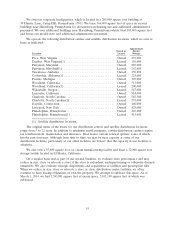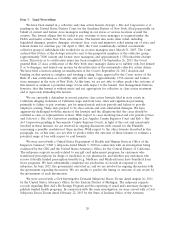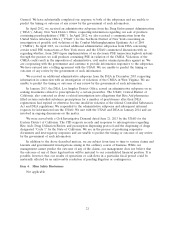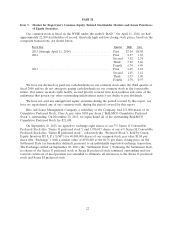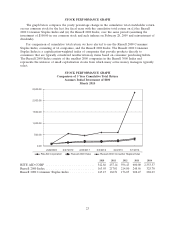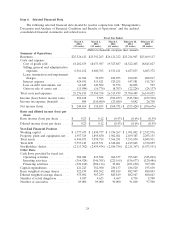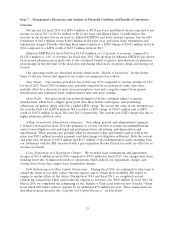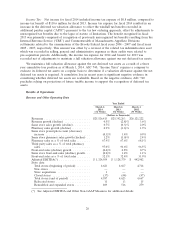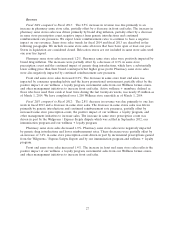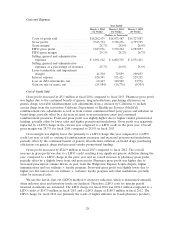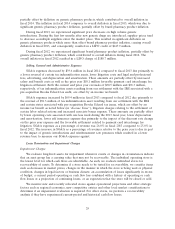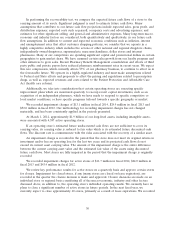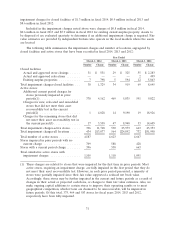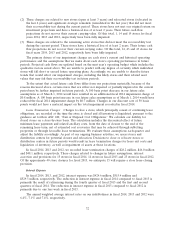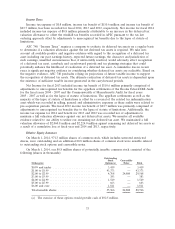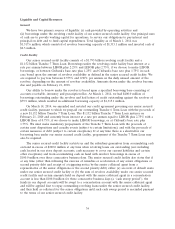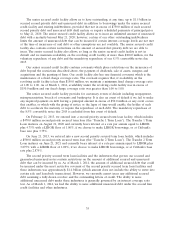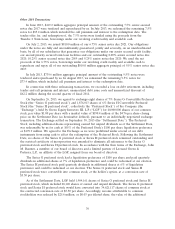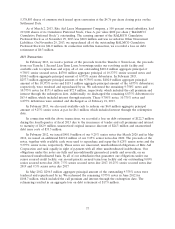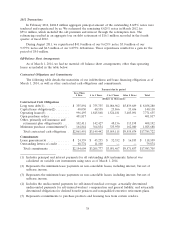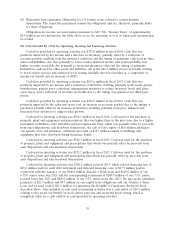Rite Aid 2014 Annual Report Download - page 30
Download and view the complete annual report
Please find page 30 of the 2014 Rite Aid annual report below. You can navigate through the pages in the report by either clicking on the pages listed below, or by using the keyword search tool below to find specific information within the annual report.partially offset by deflation on generic pharmacy products, which contributed to overall inflation in
fiscal 2014. The inflation in fiscal 2014 compares to overall deflation in fiscal 2013, which was due to
significant generic pharmacy product deflation, partially offset by brand pharmacy product inflation.
During fiscal 2013, we experienced significant price decreases on high volume generic
introductions. During the first few months after new generic drugs are introduced, supplier prices tend
to decrease as multiple suppliers enter the market place. This resulted in significant deflation on
generic pharmacy products which more than offset brand pharmacy product inflation, causing overall
deflation in fiscal 2013, and consequently, resulted in a LIFO credit of $147.9 million.
During fiscal 2012, we experienced significant brand pharmacy product inflation, partially offset by
generic pharmacy product deflation, which contributed to overall inflation during fiscal 2012. The
overall inflation in fiscal 2012 resulted in a LIFO charge of $188.7 million.
Selling, General and Administrative Expenses
SG&A expenses decreased by $39.6 million in fiscal 2014 compared to fiscal 2013 due primarily to
a lower reversal of certain tax indemnification assets, lower litigation costs and legal and professional
fees, advertising, and depreciation and amortization. These amounts are partially offset by increased
salary and benefit costs as well as the prior year $18.1 million favorable payment card interchange fee
litigation settlement. Both the current and prior year reversals of $30.5 million and $91.3 million,
respectively, of tax indemnification assets resulting from our settlement with the IRS associated with a
pre-acquisition Brooks Eckerd tax audit, are offset by an income tax benefit.
SG&A expenses increased by $69.4 million in fiscal 2013 compared to fiscal 2012 due primarily to
the reversal of $91.3 million of tax indemnification asset resulting from our settlement with the IRS
and certain states associated with pre-acquisition Brooks Eckerd tax issues, which are offset by an
income tax benefit as noted below (in ‘‘Income Taxes’’), litigation charges relating to the settlement of
certain labor related actions and increased associate bonus expense. These amounts are partially offset
by lower operating costs associated with one less week during the 2013 fiscal year, lower depreciation
and amortization, lower self insurance expense due primarily to the impact of the discount rate change
on the prior year expense and the favorable settlement related to payment card interchange fee
litigation. SG&A expenses as a percentage of revenue was 26.0% in fiscal 2013 compared to 25.0% in
fiscal 2012. The increase in SG&A as a percentage of revenues relative to the prior year is due in part
to the impact of generic introductions and reimbursement rate pressures which resulted in a lower
revenue base to measure our SG&A expenses against.
Lease Termination and Impairment Charges
Impairment Charges:
We evaluate long-lived assets for impairment whenever events or changes in circumstances indicate
that an asset group has a carrying value that may not be recoverable. The individual operating store is
the lowest level for which cash flows are identifiable. As such, we evaluate individual stores for
recoverability of assets. To determine if a store needs to be tested for recoverability, we consider items
such as decreases in market prices, changes in the manner in which the store is being used or physical
condition, changes in legal factors or business climate, an accumulation of losses significantly in excess
of budget, a current period operating or cash flow loss combined with a history of operating or cash
flow losses or a projection of continuing losses, or an expectation that the store will be closed or sold.
We monitor new and recently relocated stores against operational projections and other strategic
factors such as regional economics, new competitive entries and other local market considerations to
determine if an impairment evaluation is required. For other stores, we perform a recoverability
analysis if they have experienced current-period and historical cash flow losses.
29


